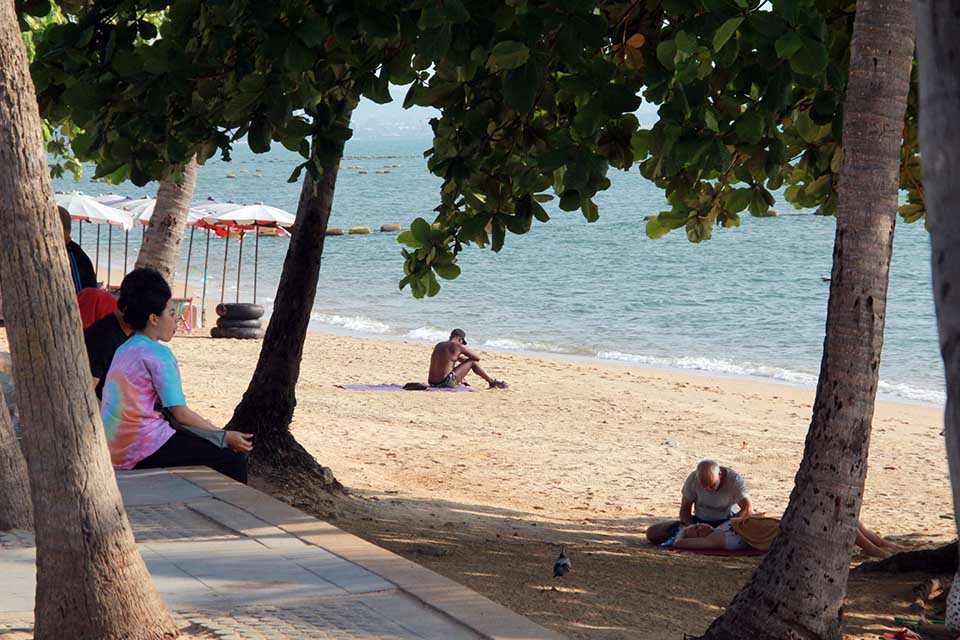
The Tourism Authority of Thailand (TAT) would like to provide an update on the provincial entry and exit rules, following the Royal Thai Government’s move to further eases COVID-19 control measures from 22 February, 2021.
Thanks to the ongoing improvement in the COVID-19 situation in the country, which justifies relaxing restrictions, the provincial entry and exit rules at most provinces have not been updated. This further reaffirms that businesses and activities across the country are resuming the new normal.
In the surveillance (green) areas, only eight from 54 provinces have updated the measures.
In the North: Kamphaeng Phet requires all visitors to register with the Mor Chana contact tracing application and take DMHTT precautions. Lamphun requires visitors from Pathum Thani, Samut Sakhon, and Tak’s Mae Sot to report to the local administration or public health office, and enter a 14-day home quarantine. Phitsanulok requires all visitors to register with the Save Phitsanulok and Mor Chana contact tracing application, and take DMHTT precautions.
Meanwhile, Phayao requires visitors from Samut Sakhon to register with the local contact tracing QR code, report to the local administration, as well as show official documents to prove their travel was necessary. They are also required to enter a health screening system for further instructions by the local health authorities, enter a 14-day home quarantine, and take the DMHTT precautions. Visitors from high surveillance areas (14 provinces) are required to register with the local contact tracing QR code, report to the local administration or public health office, enter a 14-day self-monitoring, take the DMHTT precautions, and avoid crowded places.
In the South: Phang Nga requires all visitors to register with the Thai Chana and Mor Chana contact tracing application. Visitors from Maha Sarakham, Nakhon Pathom, Nonthaburi, Pathum Thani, Phetchaburi, Rayong, Sa Kaeo, Samut Prakan, Samut Songkhram, and Tak are required to report to the local administration, public health office, or village health volunteers.
Meanwhile, visitors from Samut Sakhon, Bangkok (Bang Bon, Bang Khae, Bang Khun Thian, Chom Thong, Nong Khaem, and Phasi Charoen) are required to report to the local administration or public health office with official documents to prove their travel was necessary, and enter a 14-day home quarantine or alternative local quarantine on their own expense.
In addition, Phang Nga requires visitors who have already completed the state quarantine or local quarantine to present a medical certificate, issued no more than 3 days with an RT-PCR laboratory result indicating that COVID-19 is not detected.
Phatthalung requires all visitors to report to the local administration or public health office, and take the DMHTT precautions. Surat Thani requires visitors who have been to maximum controlled areas to undergo health screening and comply with disease control measures including enter a quarantine.
Meanwhile, Trang requires visitors from Samut Sakhon to register with the Trang Healthy Passport contact tracing application, report to the local administration, as well as show official documents to prove their travel was necessary. They are also required to enter a health screening system for further instructions by the local health authorities, enter a quarantine, and take the DMHTT precautions.
In the high surveillance (yellow) areas, only two from 14 provinces have updated the measures.
Suphan Buri requires all visitors from the maximum controlled, controlled, and high surveillance areas to report to the local administration or public health office. Meanwhile, Kanchanaburi requires visitors from the maximum controlled areas to report to the local administration or public health office.
From eight provinces classified in the controlled (orange) areas, only Nonthaburi has updated the measures requiring visitors who have been to at-risk areas to undergo health screening and comply with disease control measures, including entering quarantine. All visitors are required to take the DMHTT precautions.
This guideline summary should be used as reference only. Travellers are advised to recheck with local provincial authorities for specific requirements, which may change with the constantly evolving situation.
Surveillance areas (54 provinces): (region by region) Central: Ang Thong, Chai Nat, Lop Buri, Nakhon Sawan, Phetchabun, Sing Buri, and Uthai Thani; East: Chanthaburi, Prachin Buri, Sa Kaeo, and Trat; North: Chiang Mai, Chiang Rai, Kamphaeng Phet, Lampang, Lamphun, Mae Hong Son, Nan, Phayao, Phichit, Phitsanulok, Phrae, Sukhothai, and Uttaradit; Northeast: Amnat Charoen, Bueng Kan, Buri Ram, Chaiyaphum, Kalasin, Khon Kaen, Loei, Maha Sarakham, Mukdahan, Nakhon Phanom, Nakhon Ratchasima, Nong Bua Lamphu, Nong Khai, Roi Et, Sakon Nakhon, Si Sa Ket, Surin, Ubon Ratchathani, Udon Thani, and Yasothon, and South: Krabi, Nakhon Si Thammarat, Pattani, Phang Nga, Phatthalung, Phuket, Prachuap Khiri Khan, Satun, Surat Thani, and Trang.
High surveillance areas (14 provinces): (region by region) Central: Ayutthaya, Nakhon Nayok, Saraburi, and Suphan Buri; East: Chachoengsao, Chonburi, and Rayong; South: Chumphon, Narathiwat, Ranong, Songkhla, and Yala, and West: Kanchanaburi, and Phetchaburi.
Controlled areas (eight provinces): (region by region) Central: Bangkok, Nakhon Pathom, Nonthaburi, Pathum Thani, Samut Prakan, Samut Songkhram, and West: Ratchaburi, and Tak.
Maximum controlled area (1 province): Samut Sakhon.
DMHTT: Thailand’s Centre for Covid-19 Situation Administration (CCSA) has advised the public to take DMHTT precautions to prevent the spread of COVID-19: D – Distancing, M – Mask wearing, H – Handwashing, T – Temperature check, and T – Thai Chana contact tracing application. See more details at How to protect yourselves and others from COVID-19 in Thailand.





